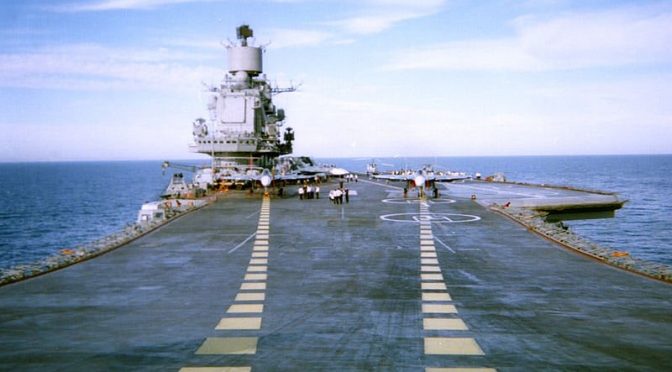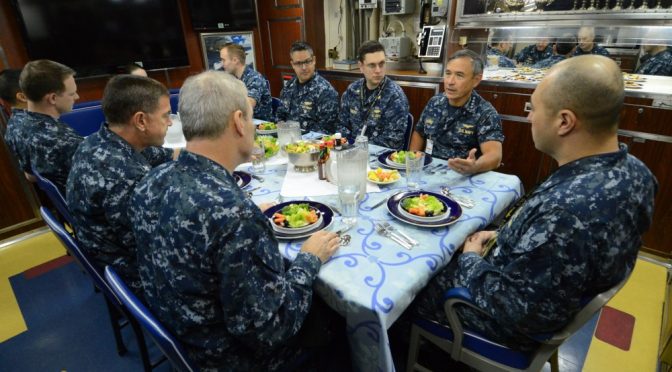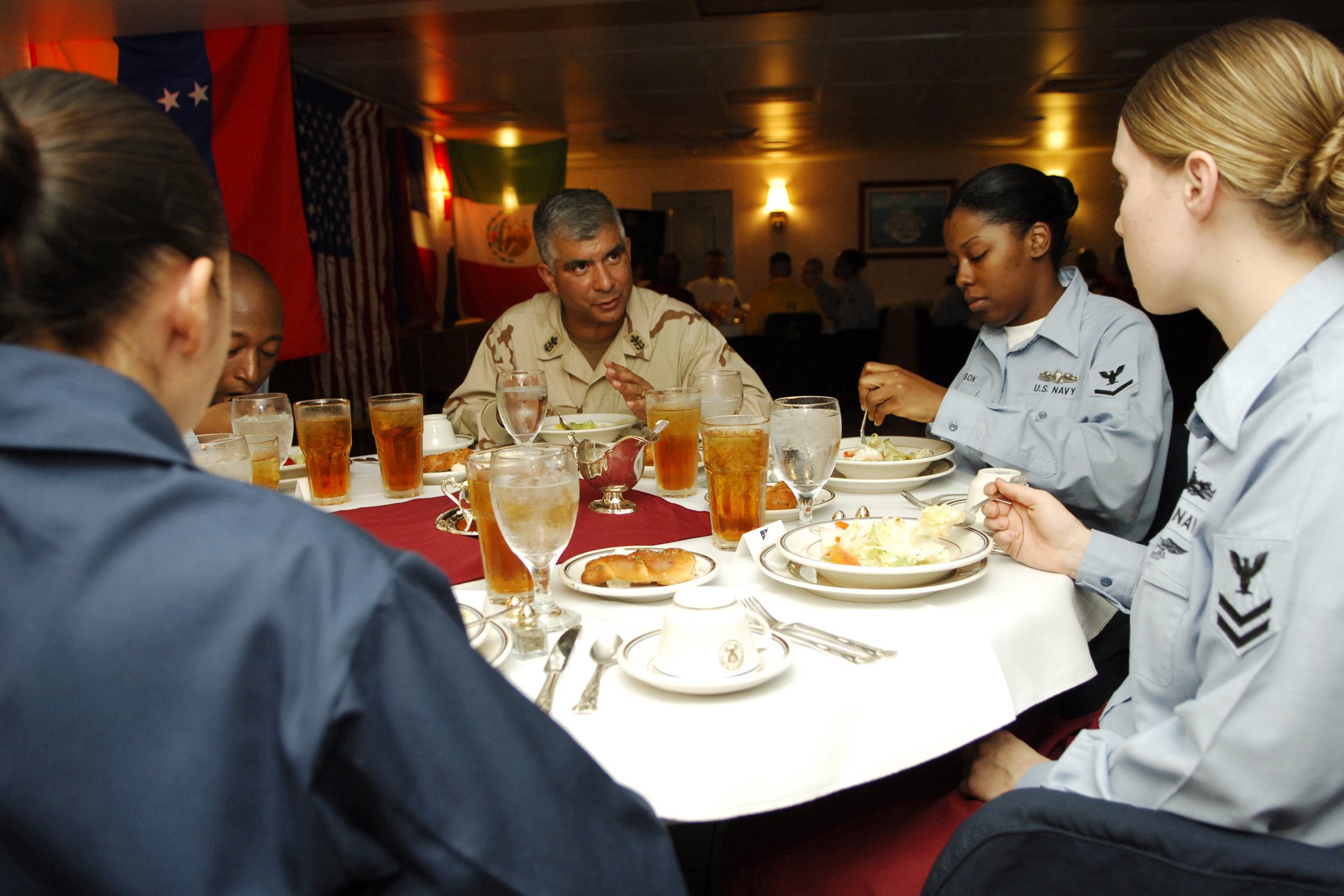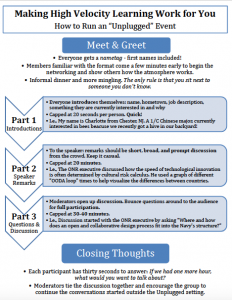By LCDR Christopher D. Nelson, USN
U.S. Air War College Professors Richard Bailey Jr., James Forsyth Jr., and Mark Yeisley recently published an eclectic book of essays on strategy. The book, Strategy: Context and Adaption from Archidamus to Airpower, contains eleven essays that span strategic topics–from cyber warfare to irregular warfare. This book, then, has a little bit of everything packed into 320 pages. The editors, interviewed over email, took the time to talk about their new book and the nature of strategic thinking. This interview has been edited for length and clarity.
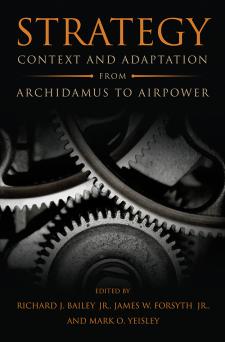
Gentlemen, welcome. Thank you for joining us to talk about your new book. I want to start off with a question for all of you. Of the eleven essays in the book–and all by different contributors–which one was your favorite? And why?
Bailey: I have to give an unsatisfying answer to this, unfortunately, and not because I am trying to spare anyone’s feelings. After two years of working on this book, I freely admit that I love each chapter in different ways and for different reasons. I do think that Professor Dolman’s opening chapter is foundational for the chapters that follow it.
Forsyth: That’s a good question. I am a theory guy so I am naturally drawn to theoretical pieces–Dolman’s stands out as particularly interesting. However, I thoroughly enjoyed Rich Muller’s piece, which orbits around the importance of history and the teaching of strategy. I feel a bit of pressure here as I generally enjoyed them all. The book has a certain uneven quality, as collections often do, but I think that gives it a certain charm–there is something here for everyone.
Yeisley: I would definitely say that the Bailey essay on thinking strategically on cyberspace and cyber power was my favorite, because of the framing he used to describe the tensions that exist within this realm. Balancing classical ideals of liberty versus order, the dichotomy that exists between cooperation and isolationism, and the question of choice between transparency and privacy are all social tensions that will remain so well into the near future.
Professor Bailey, as you are probably well aware, and as one of the contributors mentions early on in the book, there are literally thousands of books on strategy. Where does your book fit in this discussion? Or maybe a better question is, does your book cover areas of strategy that are under appreciated in other works?
Bailey: Most contemporary literature on strategy focuses on applications for business, and many suggest that a blueprint exists for strategic thinking and implementation. At worst, we may tend to seek out a cookie-cutter model and use that for all strategic problems. In our opinion, we have to fight the human tendency to find a one-size-fits-all panacea for strategic challenges. Thus, we insist that strategic thinking requires a widening of one’s own intellectual aperture to consider different perspectives and assumptions. This helps us to improve our understanding of the strategic environment, and to become more cognitively flexible in the face of uncertainty. In my opinion, this is our most important contribution to the existing literature on strategy.
Professor Bailey, in your essay titled “Four Dimensions to the Digital Debate: How Should We Think Strategically About Cyberspace and Cyberpower?” you raise some important topics. There is one topic I’d like to focus on. You ask the question: “Are our existing military and governmental structures sufficient for both optimizing its possible strengths and defending against malicious attacks?” So, if you had the authority and the money to reorganize or create cyber organizations, what would they look like in the future? Do you envision a Cyber Combatant Command? Is it something else?
Bailey: That is a great question. I do consider cyberspace to be a ‘domain’ where the military is concerned, but recognize that there are many more stakeholders outside the military. As opposed to operations in the physical domains (land, sea, air and space), cyberspace operations require a different set of assumptions, particularly regarding our previous focus on elements such as time and distance. As our military forces become more dependent on access to cyberspace for efficiency and effectiveness, I think there will be a strong argument for making CYBERCOM a functional Combatant Command, much like we did with Special Operations Command. I also think discussions of a separate cyber service will continue, particularly as the desire for independently minded cyber professionals gets stronger.
Professor Forsyth, you wrote an essay titled “The Realist As Strategist: A Critique.” This is a broad question, but I believe it is an important one. What do you think makes a “good” strategist? While you offer a critique of realism in your piece, I am curious if you believe there is a way in which one sees the world that tends to make for skilled strategist. To be clear, when I use words like a “good” or a “skilled” strategist, let us say for the sake of discussion that these people are able to formulate a strategy that achieves a successful end state.
Forsyth: Another very important question and one with no easy answer. As is made plain in the book, the SAASS faculty have many ideas regarding the meaning of strategy. So many in fact that some time ago I decided to forgo a definition and focused instead on what strategists do. So, let me ask you: what do strategists do? In its simplest sense, strategists attempt to solve puzzles and place bets. The key word there is ‘attempt.’ As we know, some puzzles cannot be solved and, therefore, ought to be avoided. Deciphering which puzzles can be solved and gauging the costs of attempting to solve them are key elements of any good strategist. Now, how do we develop that sort of a mind? For one thing, one must read deeply and widely. Strategy is an interdisciplinary enterprise and one field alone does not hold the key. Second, one must develop the ability to build bridges across a wide body of what might look like unconnected knowledge. One must see the relationships that exist between history, theory, science, economics, etc, in order to ascertain what is to be done. In doing so one develops a bone deep sense of humility, something in short supply these days.
As to a way of thinking that serves strategy best–realism is a tradition worth defending. It has a rich history and its descriptions about the nature of international politics is a good place to start one’s education. However, it should not stop there, as I mentioned.
Professor Forsyth, a short follow up. Do you believe that modern wars, namely those from the 19th century to today, start with moral considerations in mind, yet because we are human and emotional beings, that the realist inevitably comes to the forefront as leader and strategist? Does realism often consume moralism in strategic development and planning? If so, why?
Forsyth: The tension between justice and necessity is as old as politics itself, and it will never go away. What I have become convinced of is this: even when the demands of justice and the demands of necessity conflict, as they so often do, one need not eschew all calls for justice. The relentless pursuit of interest can lead to a bad end, as I try to make clear in my short chapter in the book. What ‘consumes’ the Athenians is the growing realism of their policies, not the other way around. There is a lesson there: a strategy based solely on the pursuit of interest can be as dangerous as one based solely on moral concerns–the two hang together or should, as best they can.
Another question for the group. In your opinion, today, who is writing about strategy, whether on historical case studies or contemporary strategic thought, that is worth reading?
Bailey: In my opinion, some of the most useful works on strategy today are those that explore how and why we think the way we do. Daniel Kahneman’s Thinking Fast and Slow is a good example. We cannot think about crafting, implementing, or evaluating strategies unless we first gain a respect for our own cognitive habits. Some of those habits provide intellectual opportunities, while others present challenges and pitfalls to strategic thinking. Let me also say that there are some classics reflecting many of those same teachings. Thucydides’ History of the Peloponnesian War contains concepts that, even 2,500 years later, are useful for today’s strategists.

Forsyth: I just finished reading James Scott’s Seeing Like a State. I commend it to anyone interested in strategy and understanding the limits of what states can and cannot do. I also have Stephan Jay Gould’s magnum opus The Structure of Evolutionary Theory on my desk as summer reading–as my colleagues will tell you, it has been sitting there for a long time. I’ve always been intrigued by his ideas regarding change and the natural world and I am trying to ascertain the usefulness of his ideas and political change.

Yeisley: I just finished Lawrence Freedman’s Strategy: A History, and found it an excellent piece for both the professional strategist and anyone casually interested in a comprehensive history of strategic thought. It begins with the earliest origins of strategy among primates, then moves through Biblical times, into ancient Greek and Chinese thoughts on the subject, and in theory and from practical experience. The book travels through time at breakneck speed and finishes off with a view of strategy from the business world, which is a fairly modern concept in terms of books on the subject. One of its primary questions is also one of the most basic: is it truly possible to manipulate one’s environment to maximum advantage, or do we all remain vulnerable to the vagaries of our adversaries and surroundings?
You each get to have one historical strategist over for dinner. Who’s coming? And what would want to ask them?
Bailey: I would invite Andy Marshall. Marshall served as the head of the Office of Net Assessment at the Pentagon from 1973 to 2015, and is credited with much of the long-term strategic thinking that advantaged the U.S. during the Cold War. I’d pick his brain about his intellectual habits, and about how he mentored those around him to serve in strategic roles.

Forsyth: Well, that is an interesting question. Another book I’ve just finished reading is Thomas Hughes’ Biography of Admiral Bill Halsey, Admiral Bill Halsey: A Naval Life. Another one I easily commend to all. Halsey was making Naval strategy at a time when the modern Navy was coming of age. His exploits in the Pacific theater seem particularly germane today and I’d like to ask him, ‘what do you think?’
Yeisley: I would resurrect a strategist whose life came to an end all too soon–I would invite Thomas Edward Lawrence (aka Lawrence of Arabia) for a candid discussion of the basic concepts of irregular warfare from the Arab point of view. Lawrence was a fan of the indirect approach, and led his Arab forces in skirmishing attacks on thinly distributed Turkish forces along a major rail line. His words would have great worth in a time when the U.S. has spent billions fighting the same types of forces in Iraq and Afghanistan today.
Professor Yeisley, in your essay, “Staying Regular? The Importance of Irregular Warfare to the Modern Strategist,” you state that some of the classical strategic thinkers and writers–like Sun Tzu and Clausewitz, for example, have something useful to say about irregular warfare. How so? Is there one historical strategist you would recommend we read above all others when we are thinking about irregular warfare?
Yeisley: If I had to choose one among the many classics on this subject, I would choose the writings of Mao Tse Tung as the one to read above all others. Mao created and then led an effort against the Chinese nationalists prior to WWII, adapted his tactics to fight against Japanese oppression, then adapted once again to ultimately win against his adversary and secure his place in Chinese history. While his ideology was anathema to the Western mind, his ability to train both his troops and the supporting civilian population to secure victories against armies far greater than his provides valuable lessons for strategists today.
Professor Yeisley, last question goes to you. In your essay you warn the reader that we need to be prepared for the “reality of future irregular warfare.” What advice would you give to those who must prepare for such a future?
Yeisley: I would begin by acknowledging that the irregular warfare moniker may be somewhat of an anachronism these days. “Regular” warfare, whether it be interstate conflict or not, is becoming increasingly rare – whether that has to do with the rapid pace of global interconnectedness, or due to some other factors. The fact is that “irregular” warfare is becoming the norm. That said, there seems to be little argument that this type of warfare will likely be the most prevalent in the next several decades at least. Yet the U.S. continues to prepare for conflict with a near-peer competitor, and sees China as the most likely to fit that bill.
After over a decade of war in Iraq and Afghanistan, and spending billions on efforts in each of these states, we are still facing an uncertain future. More effort needs to be spent on identifying and addressing the causes of such conflict, and that will involve an effort that spans the gamut of U.S. instruments of power. Economic aid will be necessary to decrease poverty and improve the institutions necessary for future generations. Information campaigns will need to be improved to show the populations of these states our true intentions, and diplomacy must complement both these and military efforts to combat those diehards who insist on violence. But the stark reality is that such efforts will be costly and take a long time–and that will be the reality that is hardest to face for a nation whose public wants to win quick and go home.
Gentlemen, thank you so much for your time.
Richard J. Bailey Jr. is an associate professor of strategy and security studies, USAF School of Advanced Air and Space Studies, Maxwell Air Force Base, Alabama. He holds a PhD from the Department of Government at Georgetown University. Rick is an active-duty U.S. Air Force colonel, with over 3,500 flight hours in various Air Force aircraft. His research interests include military strategy, cyber power, and civil-military relations. Rick will retire this fall and has been announced as the next president of Northern New Mexico College.
James W. Forsyth Jr. is the dean of the Air Command and Staff College at Maxwell Air Force Base, Alabama. He received his PhD in international studies from the Joseph Korbel School of International Studies, University of Denver. While there he studied international and comparative politics, as well as security studies. His research interests are wide ranging, and he has written on great power conflict and war.
Mark O. Yeisley is a former USAF colonel and associate professor at the School of Advanced Air and Space Studies. He holds a PhD in international relations from Duke University. While on active duty he served in various operational and staff assignments, and he currently teaches for the Air Command and Staff College. His research interests include contemporary irregular war, ethnic and religious violence, and political geography.
LCDR Christopher Nelson, USN, is a naval intelligence officer and regular contributor to CIMSEC. He is a graduate of the U.S. Naval War College and the Maritime Advanced Warfighting School (MAWS) in Newport, Rhode Island. The comments and questions above are the author’s own and do not necessarily reflect those of the US Department of Defense or the US Navy.
Featured Image: Chessboard (Pixabay.com)




